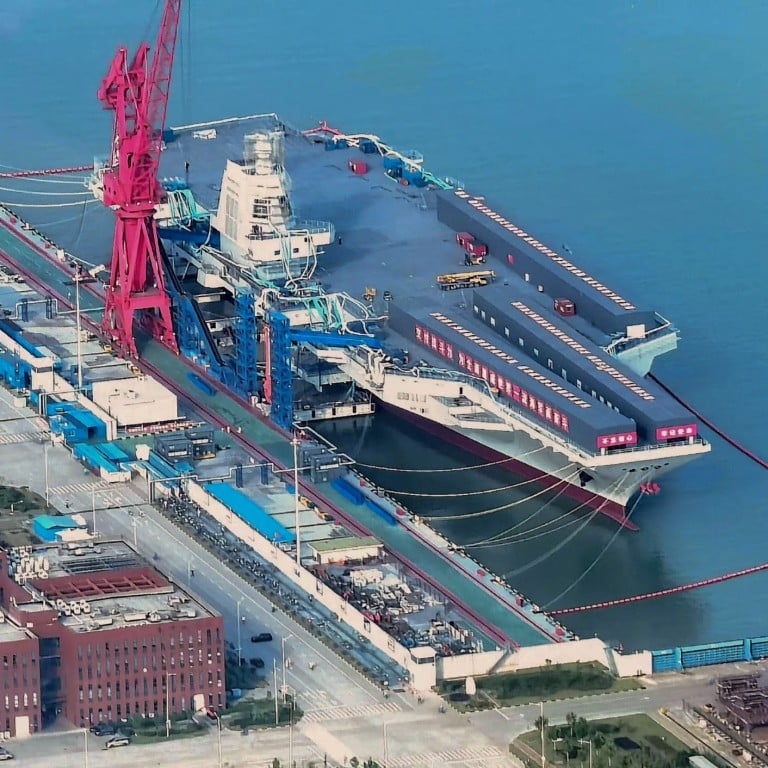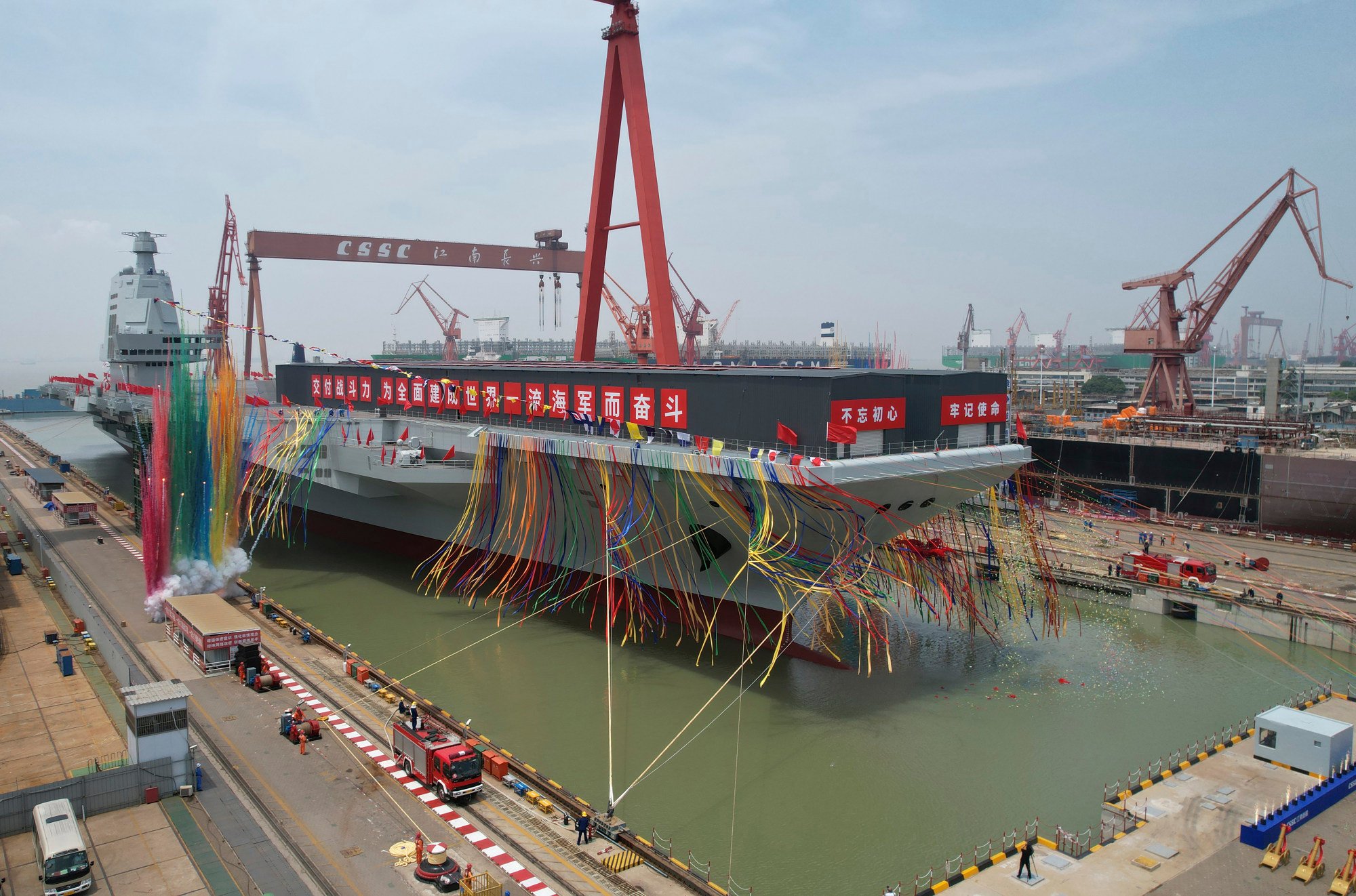
China’s Fujian aircraft carrier doesn’t have radar and weapon systems yet, photos show
- Warship was launched a month ago and military analysts expect the process to get it ready for active service could take several years
- Recent images show mounting bases where the radar will be installed are empty, and an automatic cannon appears to have been dismantled
Photos taken on Sunday by a military enthusiast and posted to Chinese microblogging service Weibo show two mounting bases on the control tower are empty. It appears they were covered when the warship was launched on June 17.
This is where the advanced radar system – an active electronically scanned array, or AESA, known as the Type 346 – will be installed.
According to Lu Li-shih, a former instructor at the Taiwanese Naval Academy, the radar system should be installed as part of the current fit-out.
“The AESA mounting bases were covered up by decorative boards when [the Fujian] was launched because it wouldn’t have been good to see these holes during the ceremony,” Lu said, noting that the launch marked the completion of the vessel’s main structure and propulsion system.
He also said the warship’s delayed launch “suggests many of the underwater engineering tests and other work to follow is also likely to be pushed back”.
Initially the warship was expected to be launched on April 23 to mark the 73rd anniversary of the Chinese navy, but it was delayed by a Covid-19 outbreak and lockdown in Shanghai.
Scientists test AI for an orbital carrier to defend China’s space assets
That was followed by a new expected launch date of June 3, to coincide with the Dragon Boat Festival, however it was again postponed without explanation.
The latest photos show some windows on the control towers have been sealed, while an automatic cannon – the Type 1130 – that was seen on the aircraft carrier’s prow during the launch ceremony appears to have been dismantled. The photos also show cables connecting the hull with equipment on shore.
Beijing-based naval expert Li Jie said the fitting out would include installing weapon systems and activating the vessel’s propulsion system.
“The aircraft carrier doesn’t have power at the moment because its propulsion system isn’t active, so cables are needed to connect to shore power for the fit-out,” Li said.
“Weapon systems and other important equipment are installed after the launch because the structure changes a little bit under water pressure,” he added.

Li expected it would take at least six months to complete the fit-out and start the next phase – the mooring trial, which will test the propulsion system at full power.
It will also be the second aircraft carrier in the world – after the USS Gerald R. Ford – to use an advanced electromagnetic catapult system that allows jets to launch more frequently with a payload of fuel and munitions.
Zhou Chenming, a researcher with the Yuan Wang military science and technology think tank in Beijing, said the latest photos suggest it could take several years before the warship can be handed over to the PLA Navy.
“Testing an aircraft carrier with an electromagnetic catapult system will be more complicated and challenging than for the traditional steam catapult,” he said, adding that the Fujian was likely to face similar development difficulties to the Gerald R. Ford.
The Gerald R. Ford is America’s most expensive warship and took 14 years and US$13.3 billion to develop and build. It was acquired by the US Navy in May 2017, more than 3½ years after its launch, and it took another five years before it was combat ready, in April this year, after countless technical problems.

